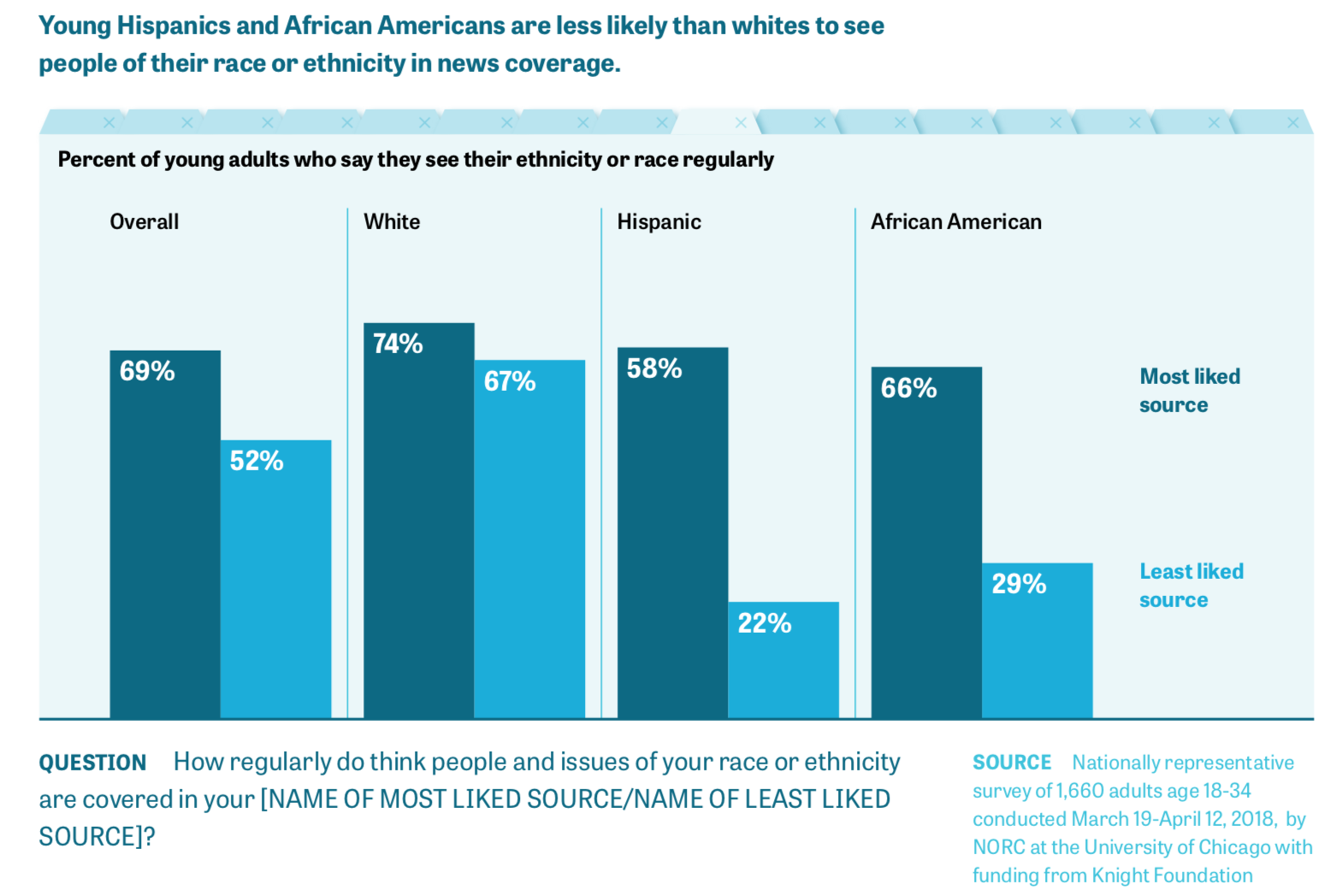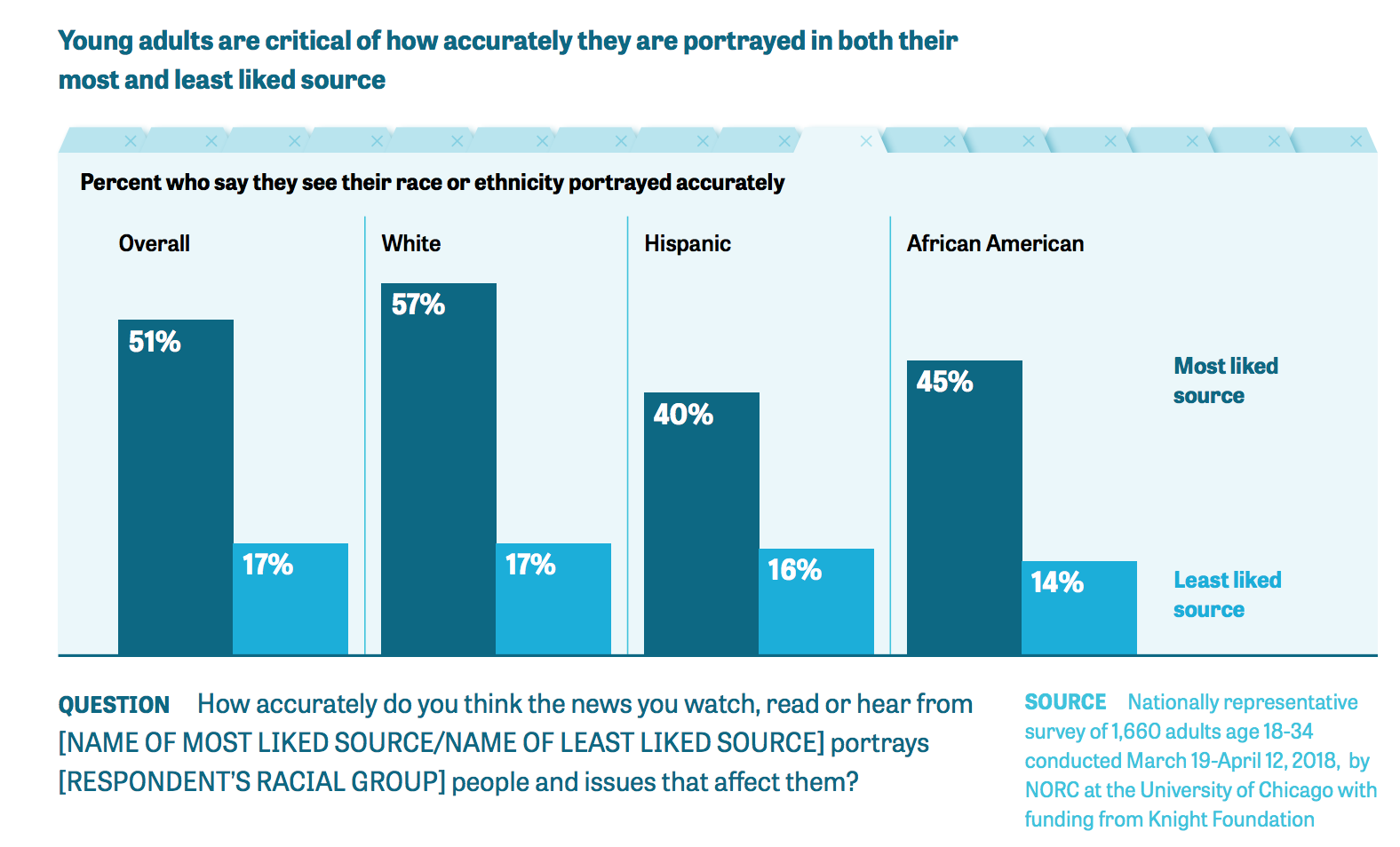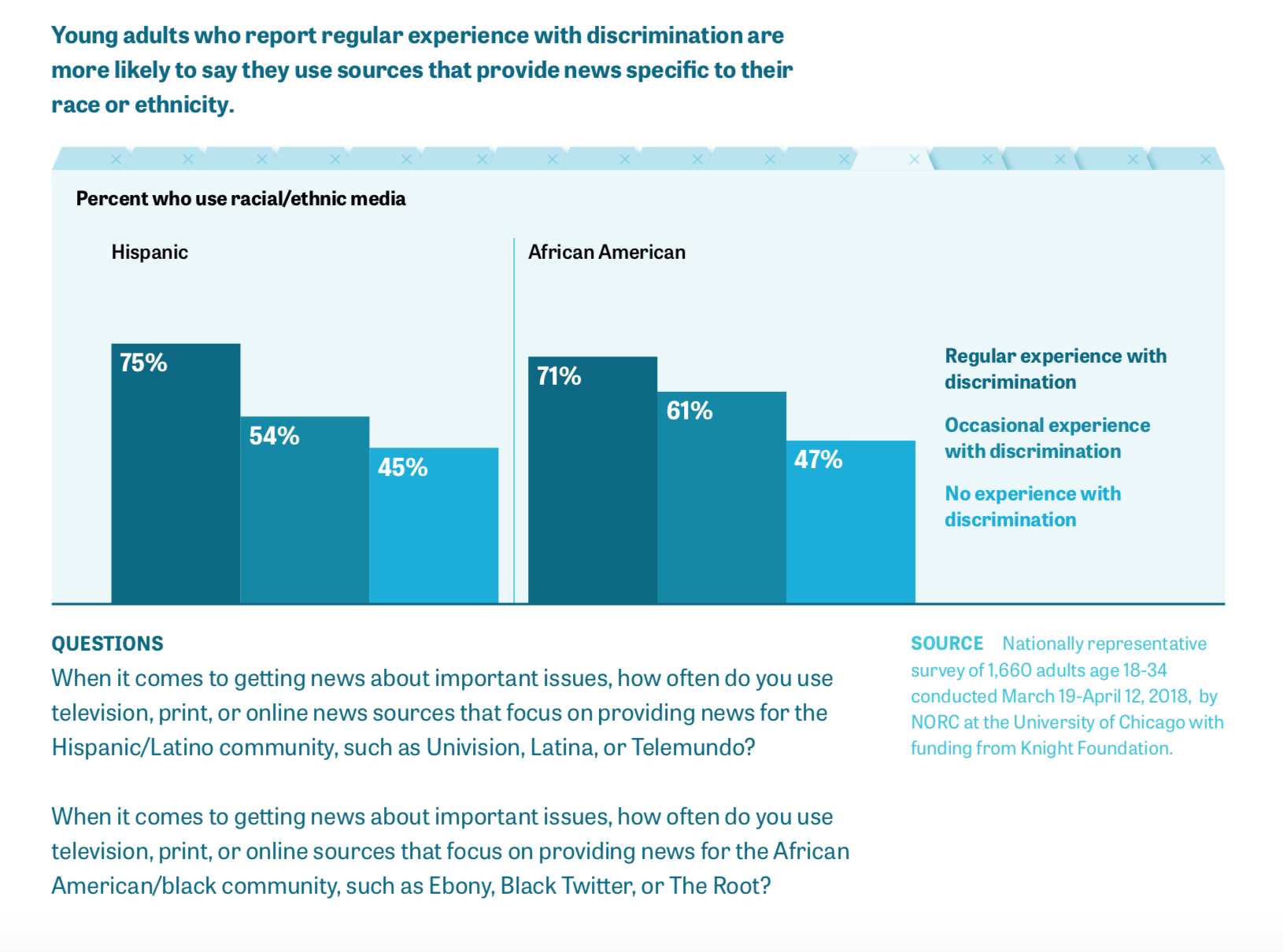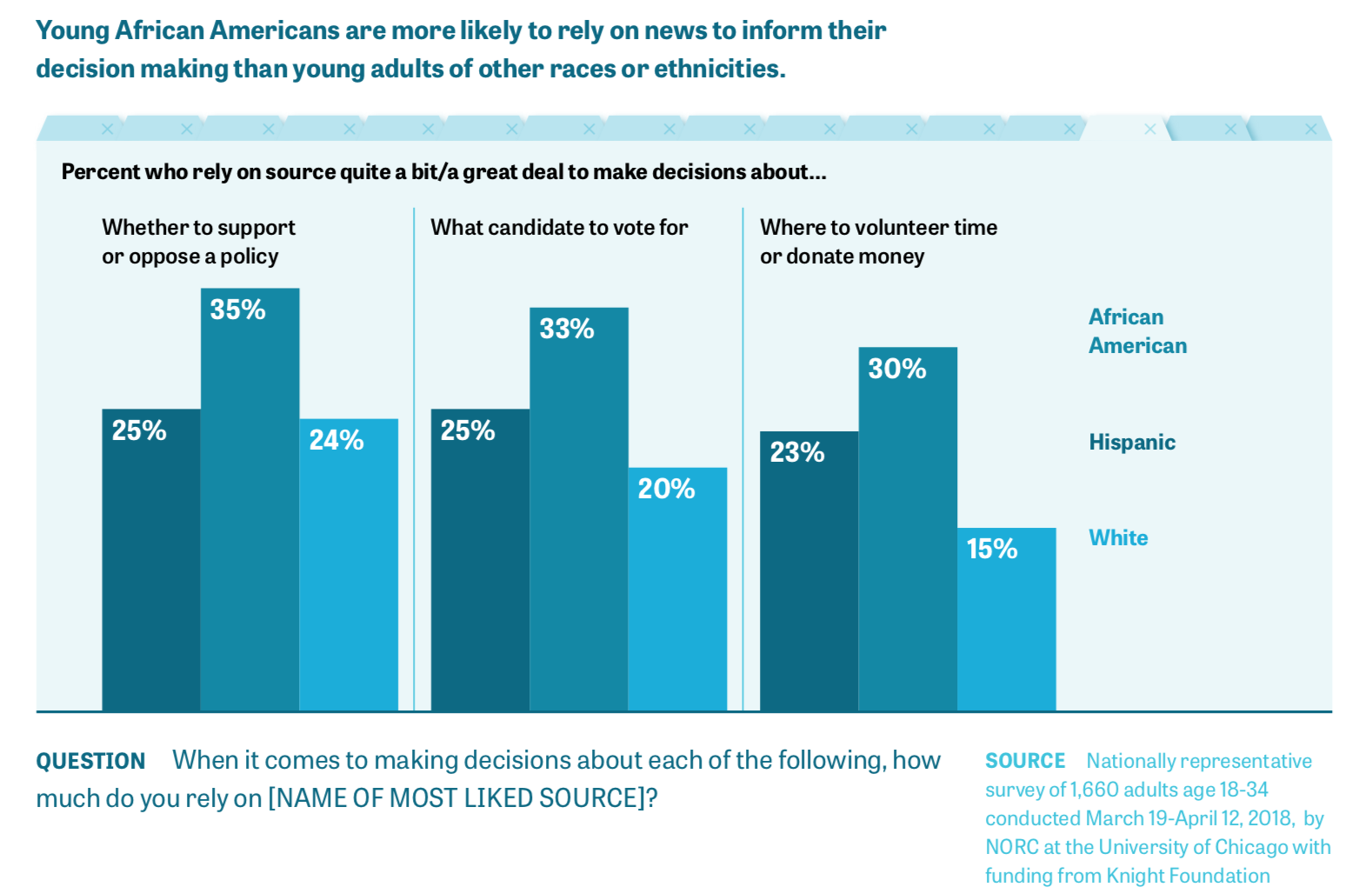A Knight Foundation survey of 1,660 18- to 34-year-olds, conducted by the University of Chicago’s NORC, finds that young adults are relatively active consumers of news — 88 percent of them access it at least once a week and 53 percent do so once a day — but they often don’t think that it reflects them. African Americans and Hispanics “say they see inaccuracies and irregularities in the coverage of their racial or ethnic communities,” and they — along with young adults who are white — think they’re often not covered accurately, even by their favorite media sources.


Young African Americans and Hispanics are also turning to ethnic media — with those “who say they regularly experience racial discrimination” more likely to seek out such sources than those who don’t say they regularly experience racial discrimination.

And young adults rely on their favorite media sources to help make decisions like which political candidates to vote for and which policies to support. African Americans are particularly likely to look to the media for this information.

What makes a young person likely to consume more news? Unsurprisingly, a committed partisan identity. Both strong Democrats and strong Republicans consume more news, on average, than weak members of either party or independents. 32 percent of those with a strong party identity say they see news stories on social media several times a day versus 18 percent of weaker partisans.
Unfortunately, Knight didn’t include a list of what young adults’ favorite and least-favorite news sources were, which is information that would have been interesting to see. But they did ask people about their “most-liked” and “least-liked” news sources. Only 45 percent said that their “most-liked” news source doesn’t have an ideological slant; 42 percent said their favorite is liberal and 13 percent said it was conservative.
(And their least-liked news source? 48 percent said it leans conservative, versus 28 percent who said it leans liberal and 23 percent who consider it neutral.)
The full report is here.
Leave a comment
You must be logged in to post a comment.